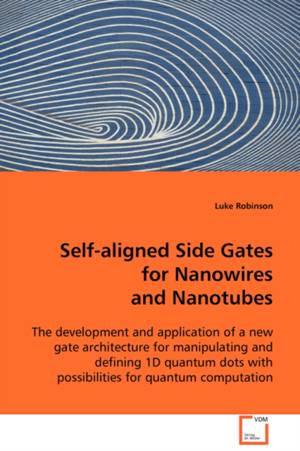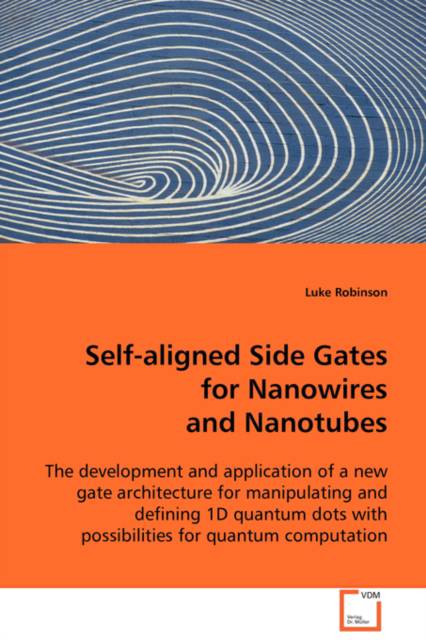
- Afhalen na 1 uur in een winkel met voorraad
- Gratis thuislevering in België vanaf € 30
- Ruim aanbod met 7 miljoen producten
- Afhalen na 1 uur in een winkel met voorraad
- Gratis thuislevering in België vanaf € 30
- Ruim aanbod met 7 miljoen producten
Zoeken
Self-aligned Side Gates for Nanowires and Nanotubes
The development and application of a new gate architecture for manipulating and defining 1D quantum dots with possibilities for quantum computation
Luke Robinson
Paperback | Engels
€ 48,45
+ 96 punten
Omschrijving
The book presents the experimental and theoretical
development of a simple to fabricate new control
architecture for nanotubes and nanowires. The
architectures arrangement offers new possibilities
for electrical, magnetic and mechanical control and a
new spin detection architecture with applicability to
quantum computation is presented. The fabrication
procedure allows twin side gate electrodes to be
placed within 5nm of a nanotube. The nanotube is
suspended between the twin gate electrodes and the
suspension creates an air gap between the nanotube
and the gates. The air gap can help when applying
high fields and should reduce noise, shielding and
hysteretic effects. The twin gate structure allows
for high field gradients which can be used to modify
band gaps, while the proximity and dimensions assist
the formation of well-defined tunnel barriers.
Ultimately it is hoped that the architecture will aid
the creation and control of quantum dots and offer
the possibility of extending low dimensional
experiments in GaAs to nanotubes and nanowires.
development of a simple to fabricate new control
architecture for nanotubes and nanowires. The
architectures arrangement offers new possibilities
for electrical, magnetic and mechanical control and a
new spin detection architecture with applicability to
quantum computation is presented. The fabrication
procedure allows twin side gate electrodes to be
placed within 5nm of a nanotube. The nanotube is
suspended between the twin gate electrodes and the
suspension creates an air gap between the nanotube
and the gates. The air gap can help when applying
high fields and should reduce noise, shielding and
hysteretic effects. The twin gate structure allows
for high field gradients which can be used to modify
band gaps, while the proximity and dimensions assist
the formation of well-defined tunnel barriers.
Ultimately it is hoped that the architecture will aid
the creation and control of quantum dots and offer
the possibility of extending low dimensional
experiments in GaAs to nanotubes and nanowires.
Specificaties
Betrokkenen
- Auteur(s):
- Uitgeverij:
Inhoud
- Aantal bladzijden:
- 100
- Taal:
- Engels
Eigenschappen
- Productcode (EAN):
- 9783639049718
- Verschijningsdatum:
- 24/11/2008
- Uitvoering:
- Paperback
- Formaat:
- Trade paperback (VS)
- Afmetingen:
- 152 mm x 229 mm
- Gewicht:
- 145 g

Alleen bij Standaard Boekhandel
+ 96 punten op je klantenkaart van Standaard Boekhandel
Beoordelingen
We publiceren alleen reviews die voldoen aan de voorwaarden voor reviews. Bekijk onze voorwaarden voor reviews.











